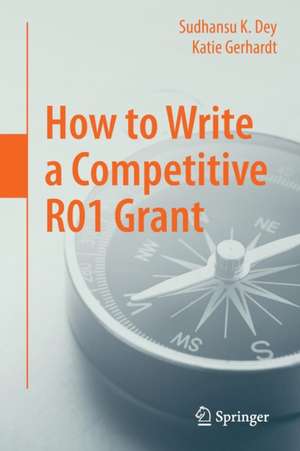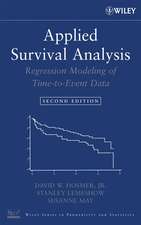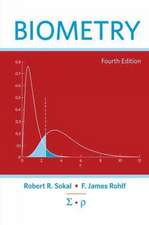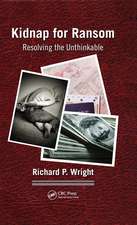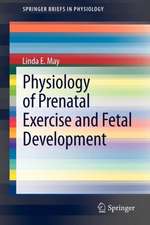How to Write a Competitive R01 Grant
Autor Sudhansu K. Dey, Katie Gerhardten Limba Engleză Paperback – 8 aug 2016
This book describes the process of completing an NIH R01 grant application. It begins with the formation of an idea and proceeds through the subsequent stages: verifying the idea’s strength and potential, collecting high-quality preliminary data, networking for feedback, writing the first and subsequent drafts of the application (including details on what to include and tips on content and tone), polishing the application, and following through after the decision is announced (appropriate responses to success or rejection). Each main stage is broken down into conversational paragraphs and bullet points for easy reference.
This easy-to-navigate book focuses on concise details and strong headings and subheadings making the content clear and easy to retain. It serves as a valuable reference source throughout the grant writing process and offers a practical outline of action.
Preț: 356.67 lei
Preț vechi: 375.45 lei
-5% Nou
Puncte Express: 535
Preț estimativ în valută:
68.26€ • 73.69$ • 57.24£
68.26€ • 73.69$ • 57.24£
Carte tipărită la comandă
Livrare economică 19 aprilie-03 mai
Preluare comenzi: 021 569.72.76
Specificații
ISBN-13: 9783319413594
ISBN-10: 3319413597
Pagini: 60
Ilustrații: X, 64 p. 14 illus. in color.
Dimensiuni: 155 x 235 x 7 mm
Greutate: 0.12 kg
Ediția:1st ed. 2016
Editura: Springer International Publishing
Colecția Springer
Locul publicării:Cham, Switzerland
ISBN-10: 3319413597
Pagini: 60
Ilustrații: X, 64 p. 14 illus. in color.
Dimensiuni: 155 x 235 x 7 mm
Greutate: 0.12 kg
Ediția:1st ed. 2016
Editura: Springer International Publishing
Colecția Springer
Locul publicării:Cham, Switzerland
Cuprins
Introduction: Fear of Uncertainty: Enter at Your Own Risk.- 1. Start with an Innovative, Out-of-the-Box Idea.- 2. First Round of Critique: Is Your Idea Actually Marketable?.- 3. Gather Contacts, Initiate Connections.- 4. Draft your Project.- 5. Learn the (Application) System.- 6. Find your Audience.- 7. Begin Writing. Officially.- 8. Edit.- 9. Keep Working. Fish for Feedback. Edit again.- 10. Gathering Documents to Submit the Grant.- 11. Submitting the Grant.- 12. Be Prepared to Wait.- Appendix 1: Sample R01.- Appendix 2: Letters of Support.
Notă biografică
Dr. S. K. Dey received his undergraduate and graduate training from Presidency College and University of Calcutta. After receiving his PhD degree, he was awarded a Ford Foundation Fellowship in Reproductive Biology in 1972 for postdoctoral studies at the University of Kansas Medical Center. Dey spent 30 years in Kansas and rose to the rank of University Distinguished Professor before joining Vanderbilt University in 2002 as Dorothy Overall Wells Professor of Pediatrics, Professor of Cell and Developmental Biology and Pharmacology. At Vanderbilt, he directed the Division of Reproductive and Developmental Biology. He received the Carl G. Hartman Award from the Society for the Study of Reproduction (SSR) in 2008. This award, named after the renowned U.S. embryologist, is the highest honor bestowed by SSR. He also received the IVI Foundation Award for the Best Clinical Research Record in Reproductive Medicine in 2009. Dey is one of only four scientists who held two NIHMethod to Extend Research in Time (MERIT) awards simultaneously, one from the National Institute of Child Health and Human Development recognizing his work in embryo-uterine interactions during implantation, and the other from the National Institute on Drug Abuse for his work in endocannabinoid signaling and early pregnancy. He has published more than 300 articles, serves on editorial boards of many journals, and mentors talented students and developing investigators from all stages of education in the biological sciences with continuous funding throughout his career spanning four decades. Dey joined Cincinnati Children’s Research Foundation as Lova Riekert Chair and Professor of Pediatrics and the Director for the Division of Reproductive Sciences in 2008.
Katie Gerhardt graduated summa cum laude from Hollins University in 2015 with a Bachelor’s degree in French and English, with a concentration in creative writing. She received the Mae Shelton Boger Award for Excellence in French Studies and the Andrew James Purdy Prize for Short Fiction for her Senior English Honors Thesis. As a member of the Division of Reproductive Sciences, she revises NIH and private foundation grant applications and manuscripts for publication in scientific journals. She also contributes as a Volunteer Writer for the Association of Women in Science Magazine and the Washington Wire Newsletter.
Katie Gerhardt graduated summa cum laude from Hollins University in 2015 with a Bachelor’s degree in French and English, with a concentration in creative writing. She received the Mae Shelton Boger Award for Excellence in French Studies and the Andrew James Purdy Prize for Short Fiction for her Senior English Honors Thesis. As a member of the Division of Reproductive Sciences, she revises NIH and private foundation grant applications and manuscripts for publication in scientific journals. She also contributes as a Volunteer Writer for the Association of Women in Science Magazine and the Washington Wire Newsletter.
Textul de pe ultima copertă
This book describes the process of completing an NIH R01 grant application. It begins with the formation of an idea and proceeds through the subsequent stages: verifying the idea’s strength and potential, collecting high-quality preliminary data, networking for feedback, writing the first and subsequent drafts of the application (including details on what to include and tips on content and tone), polishing the application, and following through after the decision is announced (appropriate responses to success or rejection). Each main stage is broken down into conversational paragraphs and bullet points for easy reference.
This easy-to-navigate book focuses on concise details and strong headings and subheadings making the content clear and easy to retain. It serves as a valuable reference source throughout the grant writing process and offers a practical outline of action.
Caracteristici
Authors have more than forty years’ experience and a successful track record with NIH funding Step-by-Step guide that breaks down the application process Includes a real-world example of a successful grant application along with sample recommendation letters Offers insights and advice on drafting a strong and inspiring research proposal Written in an inspirational and conversational style that uses the tone of a letter to individual readers, rather than that of a comprehensive manual
